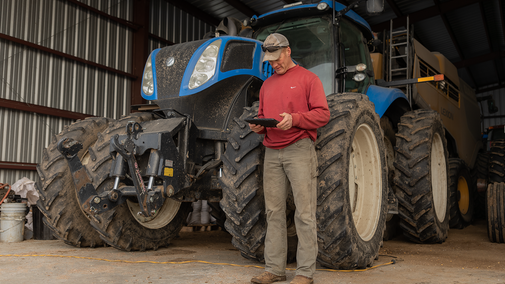A 2016 Pew Research study found that “73% of adults consider themselves lifelong learners.” This statistic may not come as a surprise to you, considering that lifelong learning is a concept that is highly encouraged in American society. Agriculture is not an industry that is exempt from this statistic. Every day on the farm is full of new learning opportunities, whether that includes trying out a new crop rotation or problem-solving an issue with your favorite tractor. At the Nebraska On-Farm Research Network, we want to help you continue learning through your operation by taking everyday lessons to the next level through on-farm research studies.
In the past year, we conducted a total of 72 research studies throughout the state of Nebraska, helping farmers dig deeper and learn more about their farming operations. Participating in on-farm research encourages learning about farm productivity, profitability, and sustainability by using resources that are available on your own operation, such as your fields, equipment, technology and production practices. Because of this, results from your on-farm research studies are directly applicable to your operation.
So many great lessons have been learned through on-farm research studies, but you don’t have to take our word for it. Hear from Jon Walz and Don Batie, Nebraska farmers who took part in on-farm research in the 2022 growing season.
Evaluating In-season N Management Technologies on Irrigated Corn
Jon Walz has been farming near Stapleton, Nebraska for over a decade and has embraced the opportunity to experiment with technologies that could improve his nitrogen management. In 2021 and 2022, Walz partnered with the Nebraska On-Farm Research Network to evaluate two technology options — the GreenSeeker(R) nitrogen sensor produced by Trimble®, which he mounted on his high-clearance applicator, and the Adapt-N crop model by Yara North America Inc. While the two technologies work differently, both are aimed at improving nitrogen efficiency by helping producers be more responsive to the varying nitrogen need within the field and from year to year.
In 2022, Walz compared these two technologies to his typical nitrogen management and found that both technology options recommended a lower average nitrogen rate compared to his traditional management. Walz noted, “the sensors see what we can’t and really help verify that what we think we need [for nitrogen rate] is usually not the case.”
Compared to his traditional management, the GreenSeeker(R) sensor recommended 79 lb/ac less nitrogen while the Adapt-N model recommended 58 lb/ac less nitrogen. Even with the reduction in nitrogen rate, both the sensor and model resulted in crop yields that were equal to yields at the grower’s traditional nitrogen rate, increasing efficiency and profit.

Reflecting on the research results, Walz noted that participating in on-farm research “continues to prove we don’t need near [the nitrogen] that [farming] standard says, and it has forced me to continue to use the sensors, helping me really evaluate our methods.”
Walz plans to continue conducting on-farm research to refine his crop and nutrient management and find the best practices for his operation.
'How Much Time?'
A question that farmers often ask is, “how much time will it take to do on-farm research?” While the answer depends on the project you have in mind, it may take less time than you think. Lexington, Nebraska farmer Don Batie has conducted over 20 studies in the past six years and noted that “with the GPS technology, this is honestly so easy to do. It does take a little extra time on my part, getting all the prescriptions loaded. But what we learn from it is extensive. It’s a very valuable thing.”
Walz and Batie are just two of the many farmers learning and improving their operations through on-farm research. The Nebraska On-Farm Research Network has partnered with farmers across the state to conduct studies addressing crop production, fertility and soil management, non-traditional products, cover crops and crop protection.
Get Started
Studies are getting underway for the 2023 growing season. Are you interested in digging deeper and initiating lifelong learning on your farm? Contact a member of the Nebraska On-Farm Research Network today to get connected or check out our 2022 Nebraska On-Farm Research Results book with reports from past on-farm research studies.
The on-farm research network is a collaborative partnership that includes Nebraska Extension, the Nebraska Corn Board, the Nebraska Corn Growers Association, the Nebraska Soybean Checkoff and the Nebraska Dry Bean Commission. Learn more on the Nebraska On-Farm Research Network website.

